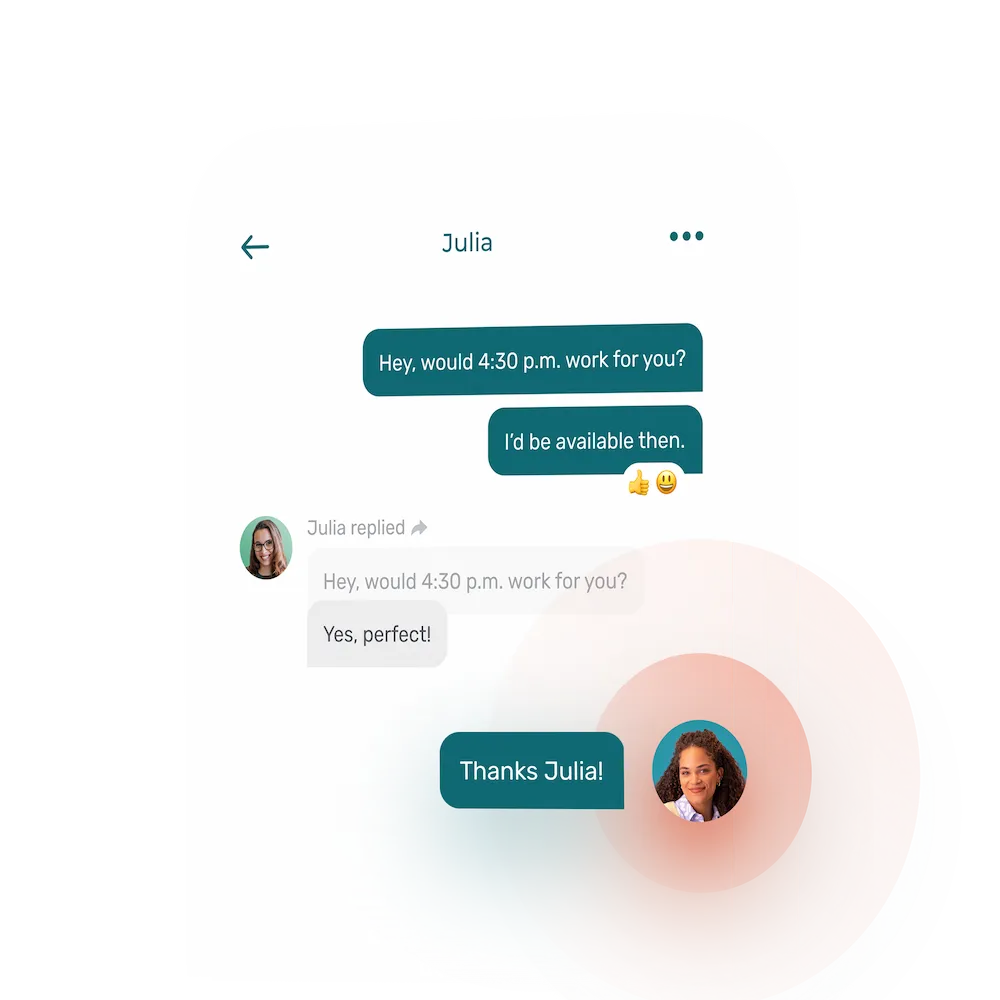Good communication within your team is crucial to fostering a motivating and productive work environment.
Conversely, bad communication really is bad for business. Among other ill effects, it increases employee stress while undermining productivity and motivation.
Quality communication makes for stronger bonds of trust and heightened staff engagement, while preventing misunderstandings in many instances. Good communication skills are essential for your business to operate smoothly.
The Most Effective Communication Strategies Are Quite Simple
1. Good Communicators Are Good Listeners
Listen to others well, and encourage them to express themselves. Knowing how to listen is one of the most important skills to improve workplace communication. When meeting with an employee, for example, always give them a few more seconds to express themselves when it seems like they’re done talking. They may have something else to add. Deliberately leave silences in the conversation.
This strategy is used by Apple CEO Tim Cook, who is known for being tight-lipped in meetings, preferring to let others express themselves freely. He also encourages open and transparent communication with employees across his organization.
While we’re on the topic, did you know that overly rigid hierarchies can impede good communication? The more your team trusts you, the more they’ll feel free to express themselves.
2. Use the Right Channels
Face-to-face conversations are by-and-large the best way to communicate. That being said, we know that speaking to colleagues in person isn’t always an option, making other means of communication necessary. The efficiency of these means varies, but one thing’s for sure, text messaging stands among the worst (in my opinion, anyway). Yet, solutions like a ‘mass text app‘ are transforming its effectiveness. Here’s a case in point.
A few years back, my then-employer called me while I was in class. Of course, being a good student, I didn’t pick up. My supervisor then texted me, “Call me back as soon as you can…” I walked out of the classroom immediately, thinking he had something urgent to tell me (and fearing I’d done something wrong). It turned out he simply wanted to know if I could make it to the following Thursday’s team activity…
Expressing oneself clearly in writing is an art… that too few people master.
From my boss’s perspective, this message was trivial, but to me, it was worrying. It’s sometimes very difficult to discern the intention and emotion of whoever’s writing to you, which is why emails and text messages can lead to misunderstandings.
To sum up, be careful to craft your message so that it’s properly understood, for example by adjusting your language register, using the right punctuation, and even including emojis. Sensitive subjects should be discussed in person.
In addition, when it comes to communication, you should use a professional communication tool. Several employee management software even offer the feature. Getting in tough with your employee on Facebook is not ideal. 😉
3. Communicate Expectations Clearly
Good communication also demands clarity. By this, I mean that your message should be simple and easily understood. Make sure to clarify your expectations. For example, what constitutes a clean restroom isn’t the same for everyone. 😉
If orders aren’t clear or well-understood, the general is to blame; if they are clear and the soldiers disobey them anyway, it’s the commanders that are at fault.
If you ask something of an employee without making sure they know the specifics, chances are you won’t be satisfied with the result. Explain your quality criteria to your team, and make sure everyone is on the same page.
4. Give Relevant Feedback
Good workplace communication also requires giving your team regular feedback. And since 90% of communication is nonverbal, do it in person. Don’t wait for the next individual meeting–give feedback daily. Encourage your employees to seek you out as soon as they have something to share, be it about work or their personal life.
Highlighting your employees’ individual contributions helps make their efforts meaningful. By doing so, you clearly demonstrate that they’re making a difference. It also allows you to approach problematic situations before they get out of hand.
5. Make Constructive Comments
When giving feedback, it’s essential to always be constructive. Radical Candor author Kim Scott explains that having negative things to point out is normal, but that it’s important to do so tactfully, in a way that drives employee improvement. For example, always discuss possible solutions to a problem and give employees a chance to explain themselves.
As soon as you receive feedback on a colleague’s work, it’s better to talk about it with them in private. Washing one’s dirty laundry in public is never a winning strategy: no one likes receiving criticism in front of their peers.
6. Foster Team Cohesion
Another key to good workplace communication is promoting team cohesion. After all, it’s definitely easier to communicate with people you get along with.
To achieve good team cohesion, plan regular team building activities. Get to know your colleagues more personally. That way, if something happens in their personal lives that affects their work, they will feel more comfortable telling you about it. What’s more, you will be more understanding and able to react accordingly.
Good Communication Is an Art
Communication ranks among any organization’s greatest challenges, yet few managers really take the time to assess and improve their skills in this area. It’s essential to develop better reflexes and to always strive to improve.
You will no doubt find being a good communicator useful. I’d even wager it will help you in your personal life as well.











